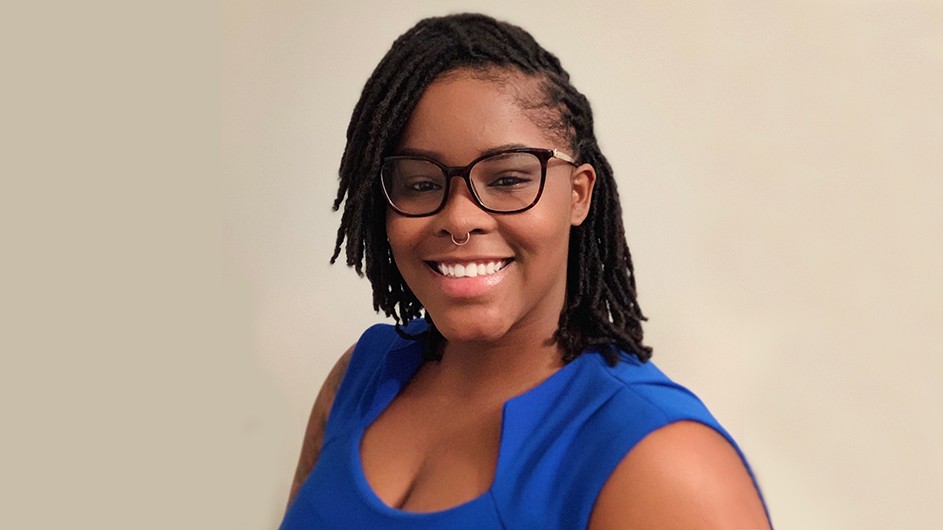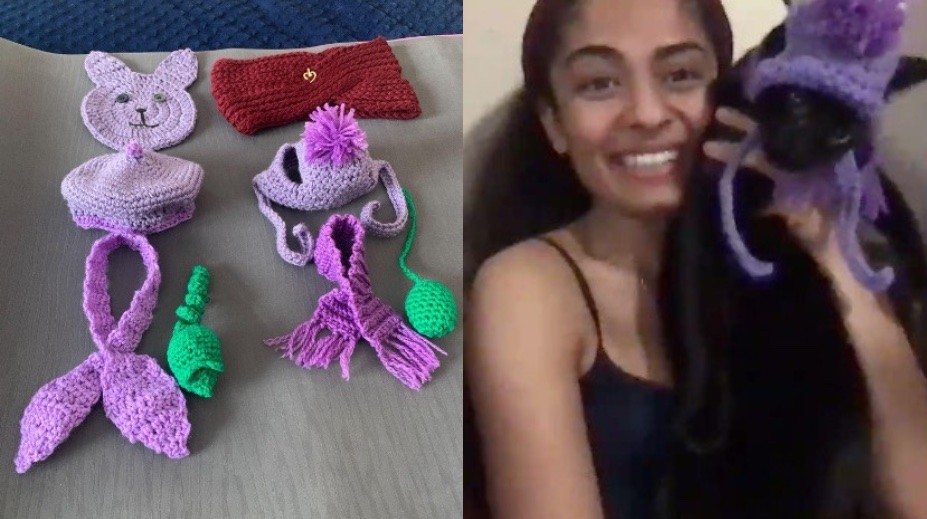Pursuing a Lifelong Interest in How Brains Age
Indira Turney, an associate research scientist at the Columbia University Irving Medical Center, is studying how brains age in diverse populations.

Indira Turney, an associate research scientist at the Taub Institute for Research on Alzheimer’s Disease and the Aging Brain in the Department of Neurology at Columbia University Medical Center, first became interested in the aging brain as a child, when she noticed her grandmother’s memory slipping. That interest led her to pursue psychology as an undergraduate, and cognitive neuroscience as a graduate student, and then eventually brought her to Columbia.
This fall, Turney was the lead author on “Brain Aging Among Racially and Ethnically Diverse Middle-Aged and Older Adults,” a paper in JAMA Neurology that examined markers of brain aging in racially and ethnically diverse midlife and older adults, and found that the brains of middle-aged Black adults showed more pronounced markers of aging than the brains of white and Latinx adults in the same age bracket. Columbia News sat down with Turney to discuss the significance of the findings, and what problems she hopes this kind of research can help address.
What surprised you the most about your findings?
The study looked at a diverse group of residents from Upper Manhattan. Previous research has shown racial disparities or inequalities in brain health in people who are 65 and older. The goal of this study was both to look at a cohort of older people to confirm that we see those disparities again, and also to see if they exist earlier, in midlife. The biggest finding was that markers of cerebrovascular disease were greater in Black adults in midlife than in their white counterparts. We expected to see that later in life, but not in midlife. Nobody’s born with these markers, so it suggests that something is happening over the course of their lives that is contributing to these inequalities.
Your paper grapples with the “weathering hypothesis,” which proposes that structural and social stressors like discrimination, residential segregation, and poverty lead to poorer health in minority populations, including Black populations. Does the paper prove that the hypothesis is true?
I think this is a really great first step in identifying that these individuals have accelerated brain aging, but what's causing it we still don't know. We know that Black individuals tend to have accumulated exposure to environmental stressors over their lives. We didn't test any specific stressors in this study, but our follow-up studies are focusing on understanding the risk and resilience factors underlying brain health in these populations. At the end of the day, it's all about trying to understand how the environment and our lived experiences affect our biology, and how that manifests as different brain health as we age.
What has the reaction to the paper been so far?
We’ve gotten some interest from the press, which was appreciated, because it’s important to get this information out there. I’ve also seen some people post on social media about the article saying things like, “oh great just one more thing for me to worry about,” which was a little discouraging, to be honest. I want our work to shed light on the truth, and the ultimate goal is to develop interventions. We’re studying this because we’re confident that the accelerated aging we’re seeing is due to modifiable factors—changes in society’s structures can lead to major changes in brain health for everyone, especially for those at greater risk.
How did you get interested in aging?
Through my grandmother. When she was in her early sixties, she started forgetting who some of her family members were; it felt like it happened very suddenly. She wouldn’t seek medical attention. She went to the Obeah man, which is like a witchcraft doctor in the community where I’m from, in the Caribbean. She thought someone had put a spell on her. I remember thinking there was something medically wrong, but I didn’t know better, plus our community typically didn’t trust science, or doctors for that matter. I wanted to understand what had happened to her, and I also wanted people to seek the medical care they needed. I thought that maybe if they saw a face like mine in these settings, it would be more encouraging and they would think, “this is not just about science, but this is about our lives, and I trust her to do it.” So I guess, initially, the goal was to have a face that people in our community can trust and also to understand what happened to my grandmother and to many other people within our community, where the prevalence of dementia is high.
How did you end up at Columbia?
I was doing interviews for a postdoc on the West Coast and one of the people I was interviewing there kept mentioning Jennifer Manly, who is one of my mentors now, as someone who studies neuropsychology in diverse populations. I reached out to Jen and she was also looking for a postdoc and asked if I was on the job market. The minute I got here I knew I had to be here. The work they were doing was absolutely amazing. It was exactly what I wanted to do. I also learned that Jen had a joint lab with Adam Brickman. Adam’s work focuses on brain imaging, mostly, and Jen focuses more of the socio-cultural aspect. And so, it was a perfect balance and aligned with my interests and goals. I thought, “I will merge both of those, and I'll be that person.”
What do you like to do in your free time?
At first I didn’t like New York, but now I love it. I love Harlem, especially. I’ve gone to some jazz clubs. The food is amazing. And just walking down the street, people say “hey, good morning, honey.” People say New Yorkers are mean, and I'm like, “well, not in Harlem.” Everyone is just so friendly, it's like you're part of a community. I think it's so important to have that kind of support, even though it's people you don't know. It's been fulfilling in more ways than one; Harlem fills me up.

What hobbies do you have that readers might not expect?
I make crochet outfits for my friends and their pets and I am a hairstylist. Growing up, my aunt had a salon, so I would help her finish braiding the ends of peoples’ hair. I did friends’ hair in grad school, and only recently, I started doing it a bit more professionally, as a side-hobby-slash-side-hustle. The crocheting is more of a hobby, though I’ve had friends pay me to crochet them an outfit. It also serves multiple purposes; doing something with my hands also helps me focus better in some meetings. Especially when they’re on Zoom.